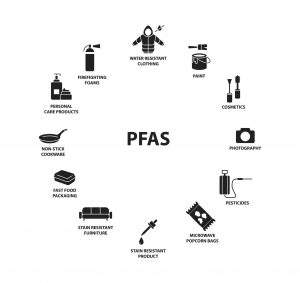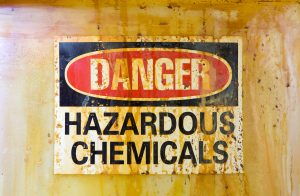 In what was likely a shock to coal-fired electric utilities, the U.S. Court of Appeals for the District of Columbia Circuit held on June 28, 2024, that proposed decisions by the U.S. Environmental Protection Agency in January 2022—prohibiting coal-fired power plants from closing coal ash impoundments where coal ash is in contact with groundwater—were a “straightforward application” of a previously promulgated agency rule. In Electric Energy, Inc. v. Environmental Protection Agency, the appeals court validated EPA’s actions as a proper exercise of authority. This ruling ends (at least for now) a regulatory odyssey that began in 2015.
In what was likely a shock to coal-fired electric utilities, the U.S. Court of Appeals for the District of Columbia Circuit held on June 28, 2024, that proposed decisions by the U.S. Environmental Protection Agency in January 2022—prohibiting coal-fired power plants from closing coal ash impoundments where coal ash is in contact with groundwater—were a “straightforward application” of a previously promulgated agency rule. In Electric Energy, Inc. v. Environmental Protection Agency, the appeals court validated EPA’s actions as a proper exercise of authority. This ruling ends (at least for now) a regulatory odyssey that began in 2015.
Articles Posted in Pollution Legal Liability
An Update on Recent PFAS Regulation and Enforcement and the Resulting Insurance Implications
 In August, we provided an overview of the recent increase in regulatory and private litigation activity around per- and polyfluoroalkyl substances (PFAS), colloquially known as “forever chemicals,” and potential insurance coverage for PFAS liability. There have been important developments on the PFAS front in the past few months. Companies with any connection to PFAS need to be cognizant of the evolving regulatory landscape and be prepared to defend against potential PFAS liability. Fortunately, insurance coverage may be available to help mitigate these fast-growing claims—including coverage under historic general liability policies.
In August, we provided an overview of the recent increase in regulatory and private litigation activity around per- and polyfluoroalkyl substances (PFAS), colloquially known as “forever chemicals,” and potential insurance coverage for PFAS liability. There have been important developments on the PFAS front in the past few months. Companies with any connection to PFAS need to be cognizant of the evolving regulatory landscape and be prepared to defend against potential PFAS liability. Fortunately, insurance coverage may be available to help mitigate these fast-growing claims—including coverage under historic general liability policies.
PFAS Enforcement and Liability Is on the Rise—Insurance Can Help
 A key component of a company’s risk management function is to keep a close eye on new and developing sources of liability and to put in place appropriate insurance to respond in the event those liabilities ripen. In recent years, there has been a significant increase in legal and regulatory attention on per- and polyfluoroalkyl substances, more commonly known as “PFAS” or “forever chemicals.” PFAS are used in countless applications, and many companies across the country bear potential liability, from chemical companies to manufacturers to retailers to corporate end users. PFAS-related enforcement is focused on remedying impacts to both the environment and human health. Importantly, a company’s liability for PFAS-related contamination or bodily injury may be covered under historic general liability policies and/or modern-day pollution liability policies. As regulation and litigation relating to these ubiquitous substances continues to surge, corporate policyholders with potential exposure should be proactive to examine their insurance portfolios and position themselves for potential insurance coverage in the event they become a PFAS liability target.
A key component of a company’s risk management function is to keep a close eye on new and developing sources of liability and to put in place appropriate insurance to respond in the event those liabilities ripen. In recent years, there has been a significant increase in legal and regulatory attention on per- and polyfluoroalkyl substances, more commonly known as “PFAS” or “forever chemicals.” PFAS are used in countless applications, and many companies across the country bear potential liability, from chemical companies to manufacturers to retailers to corporate end users. PFAS-related enforcement is focused on remedying impacts to both the environment and human health. Importantly, a company’s liability for PFAS-related contamination or bodily injury may be covered under historic general liability policies and/or modern-day pollution liability policies. As regulation and litigation relating to these ubiquitous substances continues to surge, corporate policyholders with potential exposure should be proactive to examine their insurance portfolios and position themselves for potential insurance coverage in the event they become a PFAS liability target.
Is Your Insurance Program Ready for the Biden Administration?
 The Biden administration has hit the ground running with executive orders, regulatory and legislative priorities, and cabinet-level and other top posts being announced on a daily basis. Our public policy colleagues have been closely tracking many of the policy priorities of the new administration and highlighting important regulatory and legislative developments that businesses can expect coming down the pipeline.
The Biden administration has hit the ground running with executive orders, regulatory and legislative priorities, and cabinet-level and other top posts being announced on a daily basis. Our public policy colleagues have been closely tracking many of the policy priorities of the new administration and highlighting important regulatory and legislative developments that businesses can expect coming down the pipeline.
Use Contractor’s Pollution Liability Insurance to Clean Up Potential Gaps in Your CGL Coverage
As we edge further into the summer months, many contractors see an increase in work volume with longer days and universally better weather. That said, Mother Nature is not always predictable, and an unexpected storm can quickly lead to a flash flood, or other natural disaster that might result in what insurers may classify as a pollution event. Even something seemingly as innocuous as water run-off from a job site following a summer shower has the potential to result in a third-party claim against a contractor for damage. Thus, it is imperative that contractors have the right pollution coverage in place to remain secure and profitable.
Thus, it is imperative that contractors have the right pollution coverage in place to remain secure and profitable.
 Policyholder Pulse
Policyholder Pulse


